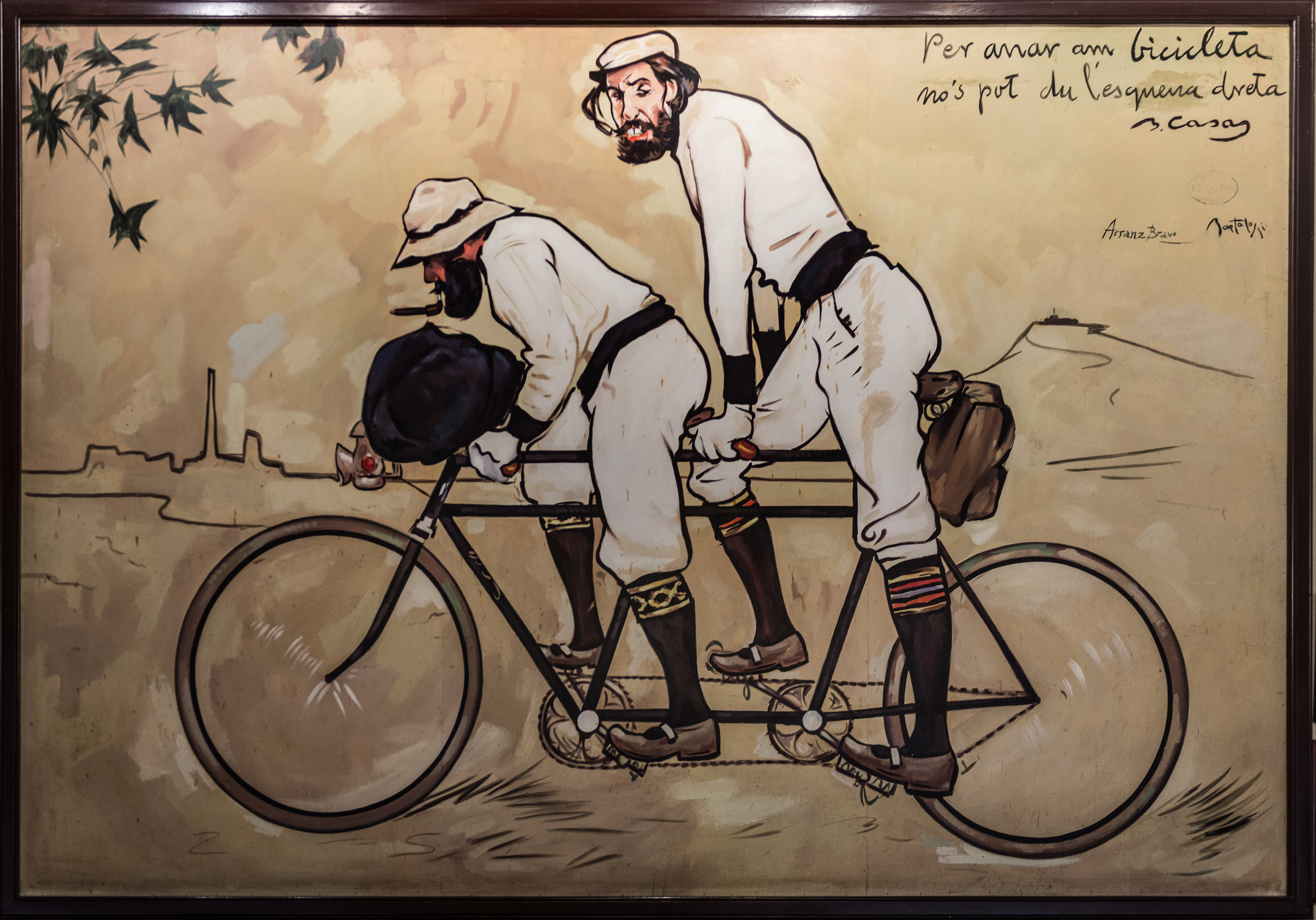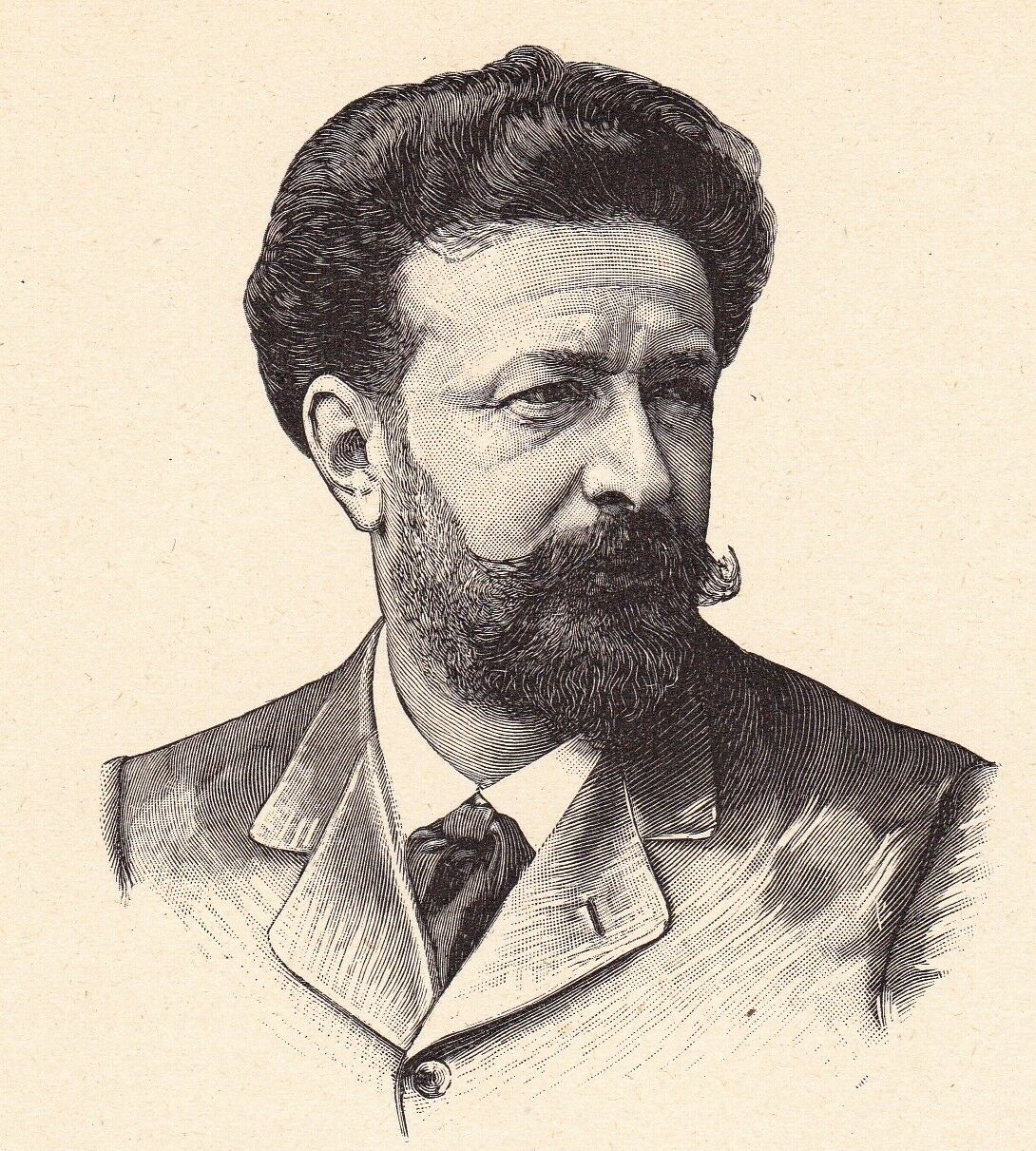|
Lluïsa Vidal
Lluïsa Vidal i Puig (Barcelona, 2 April 1876 – 22 October 1918) was a painter. Raised in a well-off family closely related to Catalan modernist circles, she is known as the only professional women painter of Catalan modernism, and one of the few women of that period who went abroad to receive art lessons. Biography Born in the number 13 of Barcelona's Trafalgar street, Lluïsa Vidal was the second of 12 siblings (nine girls and two boys): one of her sisters became associated with Pablo Casals, and another one became the wife of the philologist and writer Manuel de Montoliu. Her father, Francesc Vidal i Jevellí, was a cabinetmaker, set designer, and a foundry worker interested in art and business. Lluïsa grew up in an encouraging environment for artistic creations. She received her first lessons from her father, and also from Joan González ( Julio González's brother), Arcadi Mas i Fondevila and Simó Gómez. While in Paris, she attended Eugène Carrière's lessons, and ... [...More Info...] [...Related Items...] OR: [Wikipedia] [Google] [Baidu] |
Barcelona
Barcelona ( , , ) is a city on the coast of northeastern Spain. It is the capital and largest city of the autonomous community of Catalonia, as well as the second most populous municipality of Spain. With a population of 1.6 million within city limits,Barcelona: Población por municipios y sexo – Instituto Nacional de Estadística. (National Statistics Institute) its urban area extends to numerous neighbouring municipalities within the and is home to around 4.8 million people, making it the [...More Info...] [...Related Items...] OR: [Wikipedia] [Google] [Baidu] |
Quatre Gats
Els Quatre Gats (; ) is a café in Barcelona, Catalonia, Spain that famously became a popular meeting place for famous artists throughout the modernist period in Catalonia, known as ''Modernisme''. The café opened on 12 June 1897 in the famous Casa Martí, and served as a hostel, bar and cabaret until it eventually became a central meeting point for Barcelona’s most prominent modernist figures, such as Pablo Picasso and Ramon Casas i Carbó. The bar closed due to financial difficulties in June 1903, but was reopened and eventually restored to its original condition in 1989. History Pere Romeu had the idea to open Els Quatre Gats, drawing inspiration from a French café called Le Chat Noir, where he had previously worked. Le Chat Noir translates to “The Black Cat” in English, but the name is a little different in Catalan. Els Quatre Gats means “The Four Cats,” which is derived from a Catalan expression which means “only a few people.” The phrase is usually used to ... [...More Info...] [...Related Items...] OR: [Wikipedia] [Google] [Baidu] |
Georges Humbert
Marie Georges Humbert (7 January 1859 Paris, France – 22 January 1921 Paris, France) was a French mathematician who worked on Kummer surfaces and the Appell–Humbert theorem and introduced Humbert surfaces. His son was the mathematician Pierre Humbert. He won the Poncelet Prize of the Académie des Sciences in 1891. He studied at the École Polytechnique. He was the brother-in-law of Charles Mangin. WorksApplication de la théorie des fonctions fuchsiennes à l'étude des courbes algébriques Journal de mathematiques pure et appliquées, 4th Series, Vol. 2, 1886, pp. 239–328Online, pdf*Pierre Humbert, Gaston Julia Gaston Maurice Julia (3 February 1893 – 19 March 1978) was a French Algerian mathematician who devised the formula for the Julia set. His works were popularized by French mathematician Benoit Mandelbrot; the Julia and Mandelbrot fractals are ... (Editor): Georges Humbert- Oeuvres, Gauthier-Villars 1929 *Cours d'Analyse, 2 volumes, Gauthier-Villars 19 ... [...More Info...] [...Related Items...] OR: [Wikipedia] [Google] [Baidu] |
Georges Picard
Georges Gabriel Picard (23 December 1857, Remiremont - 25 January 1943, Yzeures-sur-Creuse) was a French painter, decorative artist, and illustrator, of Jewish ancestry. Some sources give his year of death as 1946. Biography His father, Abraham Picard, was an embroidery maker. He completed his studies at the Lycée Charlemagne in 1877, then entered the École des Beaux-Arts, where he was a student of Jean-Léon Gérôme for two years. In 1879, he was noticed by Paul Philippoteaux, who selected him as one of five assistants to help create panoramas, for exhibition in the United States from 1885 to 1887. His first individual showing came at the Salon in 1888. The following year, he participated in the "Salon de l'Europe" at the Casino de Monte-Carlo. Then worked with Henri Gervex and Alfred Stevens to produce a triptych for the Exposition Universelle. At the Salon of 1891, his view of the Port of Le Havre was purchased by the government. That same year, he began a series of ... [...More Info...] [...Related Items...] OR: [Wikipedia] [Google] [Baidu] |
Amélie Beaury-Saurel
Amélie Beaury-Saurel (1849 – May 30, 1924) was a French painter noted for portraiture. Life and career Born in Barcelona as Amélie Beaury, she added "Saurel" to her name in recognition of her mother's family who could trace their lineage to the Byzantine emperors of the 11th century. Her family lived in Spain and Corsica, but eventually settled in France where she enrolled in the Academie Julian and paid for her studies by carrying out administrative duties and managing the finances. At various times, she was a pupil of J. Lefebvre, T. Robert-Fleury and J.P. Laurens in Académie Julian, and became a very popular portrait painter, thanks to Léon Bonnat. She married Rodolphe Julian in 1895 and took on charge a women's atelier. In her publications, Marie Bashkirtseff (also a Julian pupil) talked distrustfully about "l'espagnole" (''the Spanish woman''). She made her ''début'' in the ''Salon de Paris'' in 1874, where she was considered one of the most important artists ... [...More Info...] [...Related Items...] OR: [Wikipedia] [Google] [Baidu] |
Académie Julian
The Académie Julian () was a private art school for painting and sculpture founded in Paris, France, in 1867 by French painter and teacher Rodolphe Julian (1839–1907) that was active from 1868 through 1968. It remained famous for the number and quality of artists who attended during the great period of effervescence in the arts in the early twentieth century. After 1968, it integrated with . History Rodolphe Julian established the Académie Julian in 1868 at the Passage des Panoramas, as a private studio school for art students.Tate Gallery"Académie Julian."/ref> The Académie Julian not only prepared students for the exams at the prestigious École des Beaux-Arts, but offered independent alternative education and training in arts. "Founded at a time when art was about to undergo a long series of crucial mutations, the Academie Julian played host to painters and sculptors of every kind and persuasion and never tried to make them hew to any one particular line". In 1880, wo ... [...More Info...] [...Related Items...] OR: [Wikipedia] [Google] [Baidu] |
Henri-Léopold Lévy
Henri-Léopold Lévy (23 September 1840, Nancy - 29 December 1904, Paris) was a French painter of Jewish ancestry, known primarily for mythological and Biblical subjects. Biography He was the son of an interior decorator and embroidery manufacturer. His artistic education began at the École des beaux-arts de Paris, where he worked in the studios of François-Édouard Picot, Alexandre Cabanel and Eugène Fromentin. His first exhibit at the Salon came in 1865, where he displayed his portrayal of Hecuba, finding the body of her son, Polydorus of Troy, at the seashore. It brought him a first-class medal. Two years later, he received an award for his version of Jehoash of Judah being saved from the slaughter of his family ordered by Athaliah. In 1869 he was given a prize for his "Hebrew Captive Weeping at the Ruins of Jerusalem". In 1872, after showing his portrait of Herodias, he was named a Chevalier in the Legion of Honor. In addition to his canvases, he created several murals ... [...More Info...] [...Related Items...] OR: [Wikipedia] [Google] [Baidu] |
Sala Parés
The Sala Parés is the oldest art gallery in Barcelona, Spain. Initially an art store, established in 1840 by Joan Parés, it slowly evolved into a gallery and formally became one in 1877. History Founded by the original store owner's son, , an art collector, it became the primary artistic showcase for Barcelona during the "" (Gold Rush), a period of rapid economic growth for the Catalan bourgeoisie. The artists who got their start there at that time include Modest Urgell, Romà Ribera, Josep and Francesc Masriera and Simó Gómez.Article in the Gran Enciclopèdia Catalana. In the early 1890s, it became the home base for a new generation of |
Diari De Barcelona
The ''Diario de Barcelona'' (catalán: ''Diari de Barcelona'') (The Barcelona Journal) was a newspaper founded in 1792 in Barcelona, Catalonia, Spain. With a few interruptions it was published in paper form until 1994, and in digital form until 2009, making it one of the oldest newspapers in Europe. It has been called the most important newspaper in Barcelona's history, or the first real chronicle of Barcelona. History Permission to publish a journal was granted to Pedro Husson de Lapazaran, a Neapolitan printer. It was written in Spanish and acted as an official journal, publishing official notices. Around the turn of the 18th century readers began to demand content in Catalan and during the period of Napoleonic rule it was temporarily published with parallel French and Catalan text. After the War of Independence, on 6 June 1814, the right to publish passed to Antoni Brusi i Mirabent, and subsequently to his descendants, as a result of which it was popularly called ''El Bru ... [...More Info...] [...Related Items...] OR: [Wikipedia] [Google] [Baidu] |
Sitges
Sitges (, , ) is a town about 35 kilometres southwest of Barcelona, in Spain, renowned worldwide for its Film Festival, Carnival, and LGBT Culture. Located between the Garraf Massif and the Mediterranean Sea, it is known for its beaches, nightspots, and historical sites. While the roots of Sitges' artistic reputation date back to the late 19th century, when painter Santiago Rusiñol took up residence there during the summer, the town became a centre for the 1960s counterculture in mainland Spain, in Francoist Spain, and became known as "Ibiza in miniature". Today, the economy of Sitges is based on tourism and culture, offering more than 4,500 hotel beds, half of them in four-star hotels. Sitges is a gay-friendly destination with many establishments catering for the LGBT community and popular gay beaches. Almost 35% of the approximately 26,000 permanent inhabitants are from the Netherlands, the UK, France, and Scandinavia, whose children attend international schools in the area. ... [...More Info...] [...Related Items...] OR: [Wikipedia] [Google] [Baidu] |
La Vanguardia
' (; , Spanish for "The Vanguard") is a Spanish daily newspaper, founded in 1881. It is printed in Spanish and, since 3 May 2011, also in Catalan (Spanish copy is automatically translated into Catalan). It has its headquarters in Barcelona and is Catalonia's leading newspaper. Despite being mostly distributed in Catalonia, ' has Spain's fourth-highest circulation among general-interest newspapers, trailing only the three main Madrid dailies – ', ' and ''ABC'', all of which are national newspapers with offices and local editions throughout the country. Its editorial line leans to the centre of politics and is moderate in its opinions, although in Francoist Spain it followed Francoist ideology and to this day has Catholic sensibilities and strong ties to the Spanish nobility through the Godó family. History and profile ''La Vanguardia'''s newspaper history began in Barcelona on 1 February 1881 when two businessmen from Igualada, Carlos and Bartolomé Godó, first published th ... [...More Info...] [...Related Items...] OR: [Wikipedia] [Google] [Baidu] |




.jpg)
